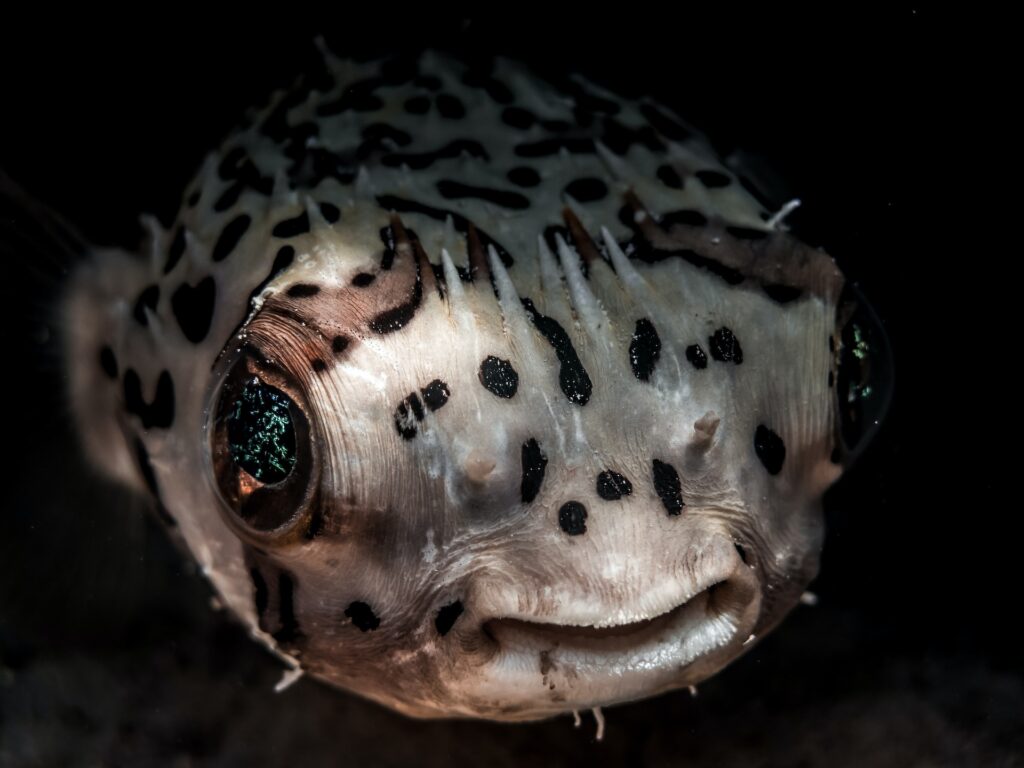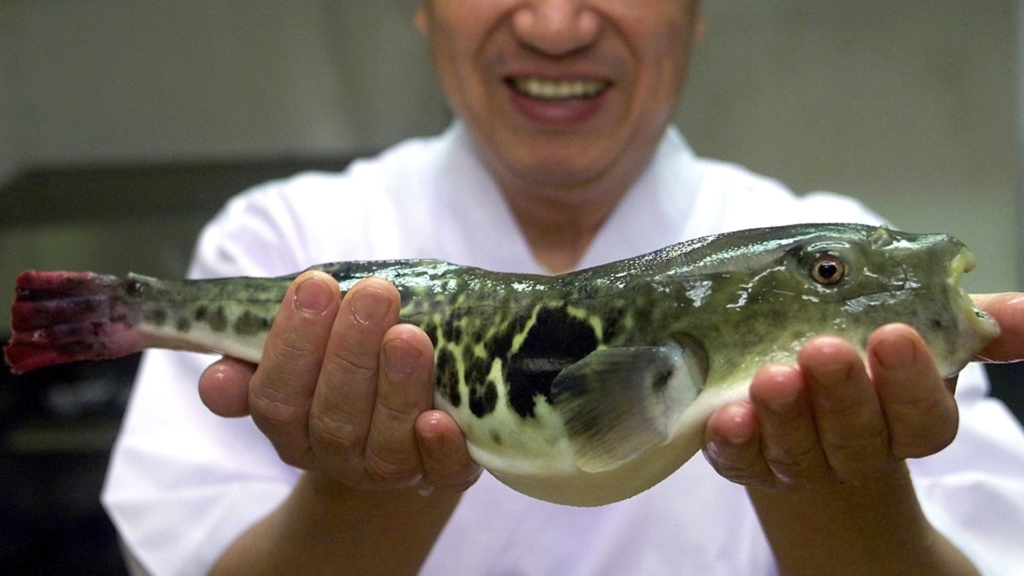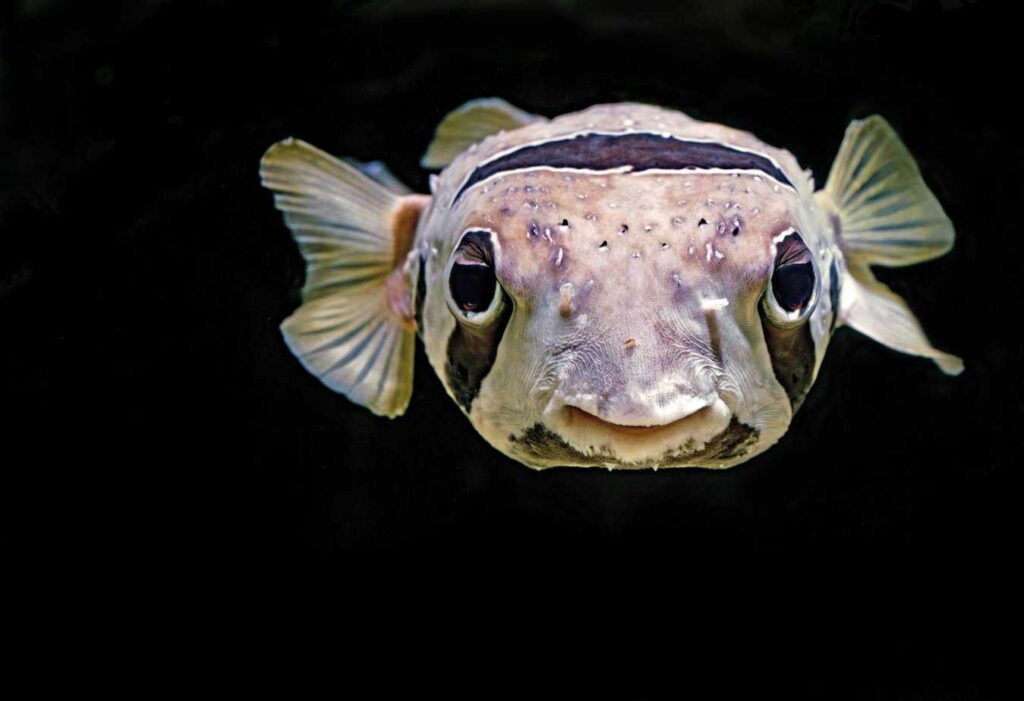
Beneath the ocean’s surface, the pufferfish, with its whimsical appearance and distinctive ability to inflate, stands as one of the most intriguing and enigmatic creatures. While their exterior showcases their remarkable defense mechanism, the inner workings of a pufferfish remain a captivating mystery. In this comprehensive guide, we’ll embark on a journey to explore the anatomy, internal organs, and physiological features that make up the complex interior of these underwater wonders. My Kissimmee Pest Control technician has a Pufferfish. Just as the pufferfish has its unique defense mechanisms, terrestrial environments also require safeguarding. When considering the protection of your home, it’s essential to explore effective solutions like Kissimmee Pest Control to ensure a safe and pest-free living space.
Pufferfish Anatomy Overview
- Exterior Defenses: Before delving into the internal structures, it’s crucial to appreciate the exterior defenses that define the pufferfish. The ability to inflate rapidly when threatened serves as a formidable deterrent to predators, turning the fish into a less appealing target.
- Skin and Spines: Pufferfish are covered in tough, elastic skin that can stretch to accommodate their inflated size. In addition to their skin, many pufferfish species have spines that lie flat against their bodies when not inflated but become erect when the fish puffs up, providing an additional layer of protection.
- Coloration and Camouflage: The coloration of a pufferfish varies among species and can include vibrant hues, intricate patterns, and even the ability to change color. These visual adaptations play a role in communication, camouflage, and attracting mates.
Pufferfish Internal Organs
- Digestive System: Like other fish, pufferfish possess a digestive system that includes the mouth, esophagus, stomach, and intestines. Their diet primarily consists of crustaceans, mollusks, and small fish.
- Liver and Tetrodotoxin Production: One of the most significant features of a pufferfish’s internal anatomy is its liver, which plays a crucial role in tetrodotoxin production. Tetrodotoxin, a potent neurotoxin, is produced by bacteria that reside in the pufferfish’s tissues, especially the liver. The liver is a key organ in regulating the distribution and concentration of this toxin.
- Reproductive Organs: Pufferfish have well-developed reproductive organs, with distinct features in males and females. Understanding the reproductive anatomy is essential for researchers studying the life cycle and behaviors of different pufferfish species.
Tetrodotoxin: The Lethal Weapon
- Source and Production: Tetrodotoxin is a potent neurotoxin found in various organs of pufferfish, with the highest concentrations typically in the liver and ovaries. While the exact source of tetrodotoxin remains a subject of ongoing research, it is believed that bacteria in the fish’s environment play a role in its production.
- Toxicity Levels: The toxicity of tetrodotoxin is exceptionally high, making it a lethal substance even in minute quantities. The presence of tetrodotoxin in a pufferfish’s tissues serves as a potent defense against predators and highlights the potential dangers associated with consuming certain pufferfish species.
- Tetrodotoxin Effects: Tetrodotoxin blocks sodium channels in nerve cell membranes, leading to paralysis and, in severe cases, respiratory failure. The effects can be rapid and fatal, emphasizing the importance of caution when handling or consuming pufferfish.
Circulatory and Respiratory Systems
- Efficient Circulation: Pufferfish possess a two-chambered heart that efficiently circulates blood throughout their bodies. This circulatory system is adapted to the fish’s lifestyle, providing oxygenated blood to meet the demands of their active and agile swimming.
- Gills and Respiration: Like other fish, pufferfish rely on gills for respiration. Gills extract oxygen from water, and pufferfish are equipped with a specialized respiratory system that allows them to extract oxygen efficiently, supporting their underwater lifestyle.
Specialized Sensory Organs
- Eyesight: Pufferfish have well-developed eyesight, crucial for navigating their underwater environments. Their eyes can move independently, providing a wide field of vision and aiding in detecting potential threats or prey.
- Lateral Line System: The lateral line system, a series of sensory organs along the sides of a pufferfish’s body, detects changes in water pressure and movement. This system is vital for detecting prey, avoiding obstacles, and responding to environmental cues.
Behavioral Adaptations
- Intelligence and Problem-Solving: Observations of pufferfish behavior reveal signs of intelligence and problem-solving skills. Some species have been observed using tools, such as coconut shell halves, to create protective shelters, showcasing their adaptability and resourcefulness.
- Courtship Rituals: Pufferfish engage in elaborate courtship rituals, especially during the mating season. Males showcase vibrant colors, create intricate patterns on the seafloor, and perform dance-like displays to attract potential mates.
Challenges and Conservation Considerations
- Habitat Degradation: Like many marine species, pufferfish face threats from habitat degradation due to factors such as pollution, climate change, and destructive fishing practices. Conserving their natural habitats is crucial for ensuring the survival of diverse pufferfish species.
- Sustainable Fishing Practices: Sustainable fishing practices are essential for maintaining healthy pufferfish populations. Regulations and measures to prevent overfishing, poaching, and destructive methods help protect these intriguing creatures.
Pufferfish, Nature’s Marvels
In conclusion, the pufferfish’s interior reveals a fascinating world of adaptations and features that contribute to their survival in the intricate underwater ecosystems they inhabit. From their inflationary defense mechanism to the production of potent toxins and their complex anatomy, pufferfish continue to captivate scientists and marine enthusiasts alike. As we unlock the mysteries of these marine marvels, the importance of conservation efforts becomes increasingly evident. Preserving the habitats of pufferfish ensures that future generations can continue to marvel at the wonders of this unique and extraordinary species beneath the ocean’s surface.



